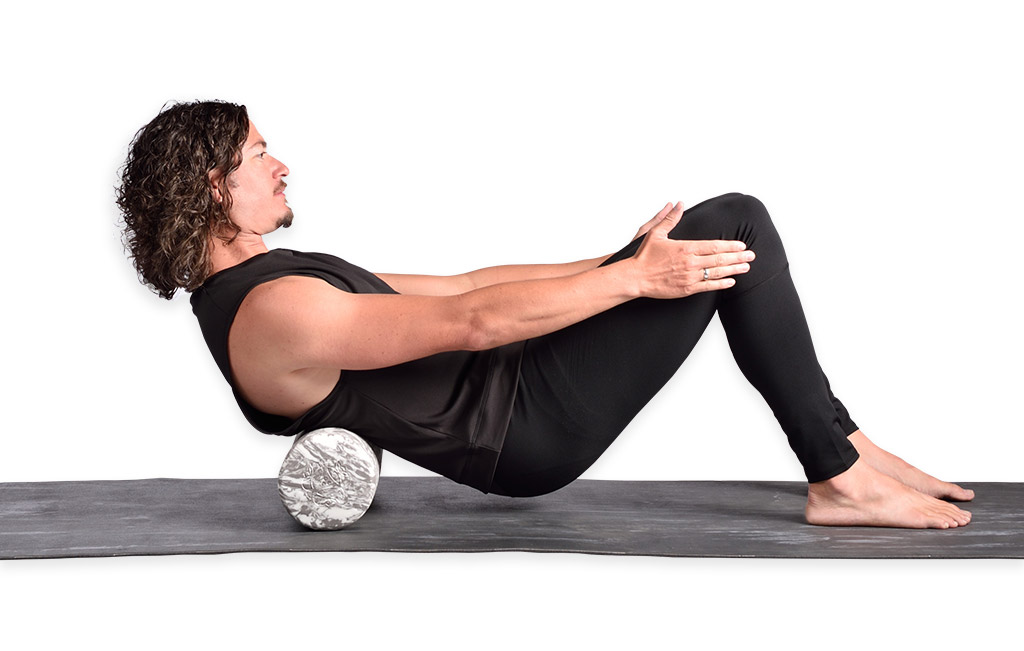
If there was a way to see a massage therapist every day, I’d likely do it. But besides being cost prohibitive, getting a daily massage would be time prohibitive. Still, wouldn’t it be nice to enjoy the benefits of some sort of myofascial release every day?
You actually can, with the help of a foam roller. Rolling different areas of your body over a foam roller is an easy way to care for your muscles and fascia—and you can do this entirely on your own and in your own time.
Fascia is a soft tissue composed of collagen fibers. It’s often compared to a plastic wrap that covers everything in the body. It basically holds our bodies together. Through stress, overtraining, inactivity or injury, our fascia can contract or form adhesions. When the fascia surrounding your muscles becomes restricted, the muscles become restricted too. Foam rolling can break up adhesions and relax the fascial sheaths around your muscles.
Foam Roller Massage Benefits
Here are just a few of the benefits of foam roller massage:
- Daily foam roller massage reduces the risk of developing adhesions. When they do form, foam roller massage can help break them up.
- Roller massage increases range of motion by reducing muscle and tissue tension.
- Massaging with a foam roller helps reduce soreness after a workout.
- Foam roller massage increases heat and circulation in the muscles and fascia.
In addition to the benefits of foam rolling, there are a couple of contraindications:
- Foam rolling can possibly damage bones in people whose bones are brittle from osteoporosis.
- A foam roller should not be used in pregnancy. The release of the hormone “relaxin” in pregnancy can cause joints to become hypermobile. Rolling could possibly cause further instability.
5 Ways to Practice Self-Massage with a Foam Roller
First, a few tips on how to use a roller effectively:
- Don’t rush. Muscles and fascia need some time to relax, and adhesions don’t break up instantly. Slow and steady is the ticket.
- Don’t overdo the sore spots. Spending lots of time pressing into a sore spot can possibly cause nerve damage. Twenty seconds is plenty. And remember, often when an area of the body is sore, the cause may be elsewhere, so take care not to hyperfocus on just the sore spots. You’ll benefit more from an all-over approach.
- Feet: Stand in Tadasana (Mountain Pose) with our foam roller on the floor in front of you. Shift weight into your right foot and place your left foot on the roller. Press your left foot downward and roll the roller under your foot. After 20 seconds, switch sides.
- Quadriceps: Lie face down so that the roller is crosswise under both your upper thighs. Supporting yourself on your forearms, use your arms to pull yourself forward so that the roller rolls down toward your knees. Then using your arms, push yourself back so the roller rolls up your thighs. Do this a few times, giving your full weight to the roller.
- Low back: Sitting on the floor with your knees bent and the soles of your feet on the floor, place your roller crosswise under your low back. Using your arms, roll the roller up and down your back.
- Upper back: Place the foam roller under your upper back, bend your knees, placing the soles of your feet on the floor. With your arms extended alongside your torso, press your feet and hands into the ground and lift your buttocks off the floor, moving into into Setu Bandha Sarvangasana (Bridge Pose). Pressing with your feet, push your body toward your head so that the roller moves lower on your back, and then draw your hips back toward your heels as the roller moves up your back. Do this several times.
- Neck: Place the foam roller on the ground and lie on your back with the roller under your neck. The roller should be perpendicular to your body. Place your hands on your hips. Roll slowly sideways, so that the foam roller rolls under your neck muscles, massaging possible sore trigger points in your neck.
If you’re interested in learning more about foam roller massage benefits, visit this site.
